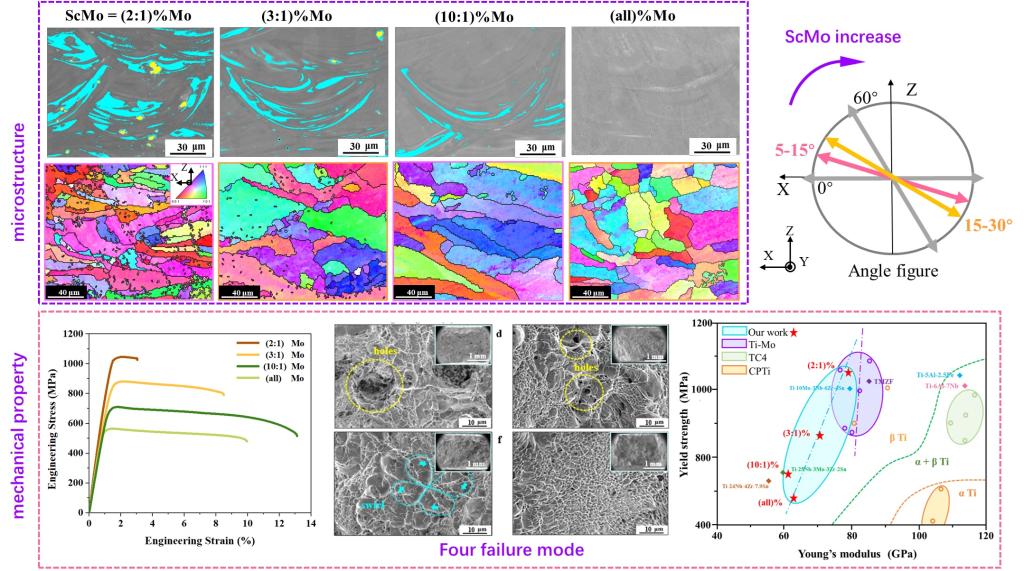Customizing the Young's modulus of Ti–Mo–Zr alloys by in situ additive manufacturing based on Mo spatial concentration modulation
Renyu Liang, Yuchuan Jiang, Jiangyue Tao, Yumeng Wang, Xueqian Lei, Dongdong Li*
https://www.sciencedirect.com/science/article/pii/S2238785424005556?via%3Dihub=
Abstract
It is well known that common orthopedic implant titanium materials have a higher Young's modulus (100+GPa) than bone. Stress shielding leaves the neighboring bone unstressed for long periods of time and bone resorption occurs around the implant, which triggers implant failure. Here, we developed a novel Ti–Mo–Zr alloy with a customizable Young's modulus by using in situ alloying and laser additive manufacturing (AM) methods. Electron backscatter diffraction (EBSD) and transmission electron microscopy (TEM) were used to elucidate the distribution of submicron Mo particles in the materials, and selected laser melting (SLM) was used to customize the spatial concentration of Mo elements in novel alloys in a predictable way. By regulating the concentration and distribution of unmelted Mo particles, it is possible to tailor the grain growth angle and phases of the alloy. This results in excellent comprehensive mechanical properties for the alloys with a customizable Young's modulus ranging from 59.3 to 83.6 GPa, tensile strength from 564 to 1045 MPa, and a fracture strain of up to 13.1%. Orthopedic implants with a customizable Young's modulus can be adapted to bone tissues in different body parts, providing endless possibilities for personalized surgical solutions for patients. The economic potential for such materials in smart medical is enormous.


